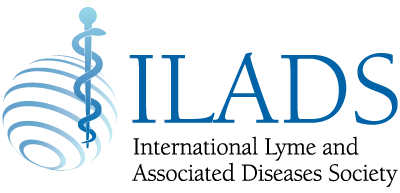ILADS Makes its Mark on HHS Tick-Borne Disease Working Group
In November 2017, the US Department of Health & Human Services (HHS) appointed members to its Tick-Borne Disease (TBD) Working Group, just before its first official meeting in December. In its inaugural iteration, ILADS is pleased to announce that two of the group’s seven public members are current or former members of ILADS and its sister organization, ILADEF: Dr. Richard Horowitz and Ms. Patricia Smith. Further, three ILADS members gave stakeholder presentations at the meeting: ILADS Immediate past president, Dr. Samuel Shor, ILADS treasurer, Dr. Elizabeth Maloney, and ILADS member Lorraine Johnson, JD, MBA, each presented perspectives on tick-borne diseases at the Working Group’s first meeting.
The TBD Working Group was established by Congress in 2016 as part of the 21st Century Cures Act. The Group was formed to provide expertise,identify research gaps and designate priorities, and to review federal efforts related to all tick-borne diseases and ensure interagency coordination. The group’s public members include practitioners, researchers, patients, and advocates, all reflecting diverse backgrounds, views and goals.
Dr. Richard Horowitz brings three decades’ experience — over which he has treated more than 12,000 patients with tick-borne disease — to his position on the Working Group. Dr. Horowitz co-authored ILADS’ first peer-reviewed Lyme guidelines in 2004, has written two best-selling books on effective treatment, and has trained dozens of healthcare providers in diagnosing and caring for patients with tick-borne illnesses. He is a member of the World Health Organization’s Ad Hoc Committee for Health Equity, which works to improve care for patients with Lyme, and has actively worked with local, state, federal and international governments over the past 30 years to improve the diagnosis and treatment of tick-borne disorders. Dr. Horowitz has high expectations for the Working Group, saying he expects… “the group… will work together in a productive manner to solve some of the most difficult healthcare challenges facing the American people.”
Ms. Patricia Smith, the president of Lyme Disease Association and a former ILADS director, is a tireless advocate who has brought attention to Lyme publicly and in local and national legislatures. She has also worked to increase research funding for tick-borne diseases, leading to the award of more than 100 research grants and findings, which have been published in 42 scientific journals. She has organized 18 continuing medical education conferences on Lyme disease for doctors and researchers, and developed materials that have been distributed to more than 2.5 million people, including: ABCs of Lyme Disease pamphlet for parents and educators; the LymeR Primer brochure, which has information on 20 US tick-borne diseases; the Tick Mark bookmark; and Tick Awareness cards. With her appointment to the Working Group, Ms. Smith brings a “perspective on what patients really experience—both with tick-borne diseases and with the healthcare system that has not always been friendly to Lyme patients.”
During its first public meeting in December 2017, the Tick-Borne Diseases Working Group sought input from invited stakeholders and the general public. Three ILADS members gave stakeholder presentations. Dr. Samuel Shor, past president of ILADS, presented on the relationship between the delay in diagnosis and treatment of Lyme disease and the development of chronic symptoms. Dr. Elizabeth Maloney, ILADS treasurer, focused on gaps in the scientific understanding of Lyme disease, as well as avenues for future federally funded public health projects and activities. Lorraine Johnson, the CEO of LymeDisease.org and the principle investigator of its big data project, MyLymeData, spoke about the need for patient-centered care and large observational trials to identify best treatment practices for different subgroups of patients with Lyme.
ILADS is pleased that so many clinicians and researchers have been invited to share our evidence-based approach to treating patients with tick-borne illnesses with the Working Group. We are hopeful that as a result, our national understanding of Lyme disease will evolve, culminating in better options for patients.
